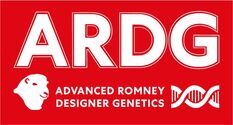Central Progeny Test
The Central Progeny Test funded by Beef & Lamb New Zealand was set up to pool and evaluate rams from across the industry.
The Central Progeny TestA progeny test is used to benchmark the performance of a ram by comparing how his progeny perform relative to progeny from other rams in the same environment. In this way, rams can be compared across different flocks.
B+LNZ Genetics Central Progeny Test (CPT) currently involves 180 rams, across nine sites (including six commercial properties and three cadet-training bases).
The benchmarks created by this test underpin NZGE – the weekly large-scale across-flock and across-breed evaluation.
The test backgroundThe B+LNZ Genetics CPT was launched in 2002 and ran across three lowland sites.
In 2013, the test added a comparison of performance on two hill sites, compared to the existing lowland sites. The same year, it also added a “genetics by environment” element, by testing the rams’ progeny generated in different environments in the same year. Progeny were produced through AI, with reference rams used between years and between sites to provide benchmarks for ranking rams.
In 2016, the test’s focus was adjusted further towards more commercial hill country environments (where most of New Zealand’s sheep flock are now farmed) and – in partnership with industry – “Next Generation” flocks were introduced.
These 2016 changes allowed:
The CPT was not set up as a breed comparison. It has focussed on identifying the best genetics, regardless of breed. It has used a small number of rams, with a greater number of progeny per ram, from as many breeds as possible, to improve genetic connections within the New Zealand sheep industry.
Genetic connections between breeding groups established through the CPT have been used in large scale evaluations performed across flocks and across breeds by Sheep Improvement Ltd (SIL). These are the SIL-ACE (SIL Advanced Central Evaluation).
Once again ARDG have contributed to the CPT 2021 Low Input Group www.blnzgenetics.com/files/1632459786_Low%20Input%20Public%20Report%20-%20Sept2021.pdf
sheep_progeny_testubannualreport-mar2019v3.pdf
The Central Progeny TestA progeny test is used to benchmark the performance of a ram by comparing how his progeny perform relative to progeny from other rams in the same environment. In this way, rams can be compared across different flocks.
B+LNZ Genetics Central Progeny Test (CPT) currently involves 180 rams, across nine sites (including six commercial properties and three cadet-training bases).
The benchmarks created by this test underpin NZGE – the weekly large-scale across-flock and across-breed evaluation.
The test backgroundThe B+LNZ Genetics CPT was launched in 2002 and ran across three lowland sites.
In 2013, the test added a comparison of performance on two hill sites, compared to the existing lowland sites. The same year, it also added a “genetics by environment” element, by testing the rams’ progeny generated in different environments in the same year. Progeny were produced through AI, with reference rams used between years and between sites to provide benchmarks for ranking rams.
In 2016, the test’s focus was adjusted further towards more commercial hill country environments (where most of New Zealand’s sheep flock are now farmed) and – in partnership with industry – “Next Generation” flocks were introduced.
These 2016 changes allowed:
- Testing of more rams of a younger age
- Rams of high genetic merit to be identified in time to be used more widely, while still alive
- The test to be carried out under more commercially-relevant environments, and
- Partnership with industry.
The CPT was not set up as a breed comparison. It has focussed on identifying the best genetics, regardless of breed. It has used a small number of rams, with a greater number of progeny per ram, from as many breeds as possible, to improve genetic connections within the New Zealand sheep industry.
Genetic connections between breeding groups established through the CPT have been used in large scale evaluations performed across flocks and across breeds by Sheep Improvement Ltd (SIL). These are the SIL-ACE (SIL Advanced Central Evaluation).
Once again ARDG have contributed to the CPT 2021 Low Input Group www.blnzgenetics.com/files/1632459786_Low%20Input%20Public%20Report%20-%20Sept2021.pdf
sheep_progeny_testubannualreport-mar2019v3.pdf
